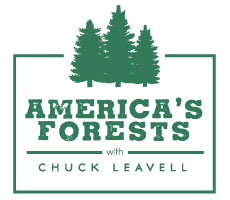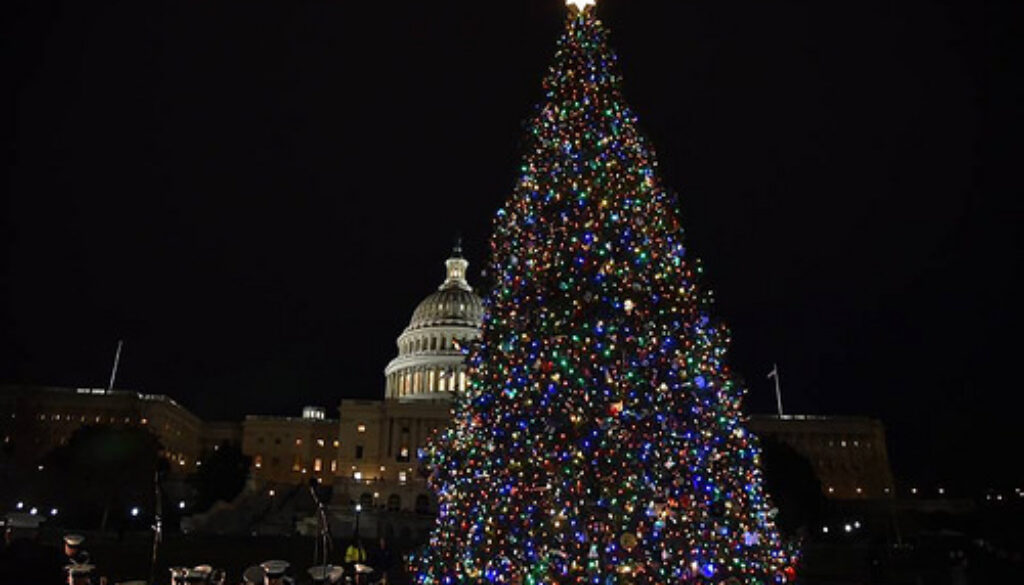Judge Saves Christmas Tree but Larger Issues Remain
Judge Saves Christmas Tree but Larger Issues Remain
By Bruce Ward

The dispute between federal agencies and Wild Earth Guardians takes place against a backdrop of larger issues that extend beyond their on-going lawsuit and should deeply concern the public. A U.S. District Court this week resolved part of the uncertainty by approving an agreement that will, among other things, let the U.S. Forest Service harvest the U.S. Capitol Christmas Tree. My organization, Choose Outdoors, the primary non-profit partner in the U.S. Capitol Christmas Tree project, is grateful for the common-sense clarification.

But as a neutral party to the lawsuit, I believe that while both sides in the case make good points, they’re failing to remind the public of the enormous troubles facing national forests – issues that really should unite people who care about our natural place our public lands.
For decades, I’ve traveled to Washington, D.C. and advocated for several forest-related policies such as supporting outdoor recreation and reducing wildfire hazards. Repeatedly, I’ve seen well-intentioned people dive so deeply into the weeds that they fail to resolve the more serious issues that led to the disputes in the first place. Two key problems in particular stalk this court dispute:
- All U.S. public lands agencies, including the U.S. Forest Service, have been unconscionably underfunded for decades.
- Catastrophic wildfires have become more common and have grown in both frequency and intensity across the region, requiring the U.S. Forest Service and other public lands agencies to spend more of their already limited resources (both money and staff) on fighting the flames.Climate change unfortunately is very real and already may be drying out the Southwest’s ecosystems, worsening the fire dangers.
The lawsuit in question illustrates what happens when forest advocates look at only part of the overall problem – a variation on the law of unintended consequences.
Twenty years ago, the U.S. Forest Service and U.S. Fish and Wildlife Service said their scientists would conduct studies to determine how many Mexican spotted owls (a threatened species under the federal Endangered Species Act) live in the Southwest’s national forests. The research also was supposed to determine if commercial timber cutting and even prescribed burns hurt or help the owls’ populations. More than six years ago, Wild Earth Guardians sued the agencies because the feds never finished those studies. This September, a federal judge excoriated the agencies and issued a sweeping order that seemed to halt any timber-related project on national forests in the region.
Yet the U.S. Forest Service’s response – that it lacks funds to do the studies properly – also has merit. For decades, Congress and several presidential administrations have given short shrift to the U.S. Forest Service, and other public land management agencies. The extra burden of coping with climate change means all the agencies are falling further behind on their legally obligated jobs — including forest health and endangered species. Some facts:
- For more than 10 years, the U.S. Forest Service’s inflation-adjusted budget essentially has stayed flat; for 2017, it was about $5.67 billion. But last year, Congress cut the agency’s funds to $4.7 billion – a $938 million drop (or roughly 17 percent).And this year, the administration’s budget envisions cutting the 2019 Forest Service discretionary funding (which covers items like campgrounds and wildlife studies) by another $486 million from 2018 levels.
- That decrease would mean the agency’s multi-billion-dollar list of deferred maintenance projects will just grow longer. For example, if Congress restores just the amount that the administration wants to slash this year, the sum could cover the $264 million the administration seeks to cut from the U.S. Forest Service’s capital and maintenance fund and enable the agency to address its enormous backlog of poorly maintained roads, bridges and other structures. In addition, the sum would replenish the $15 million for wildlife habitat management that the administration also wants to cut.
- Meanwhile, the costs of fighting wildfires now consume more than half the Forest Service’s entire budget. Yet in 2018, the agency’s Wildland Fire Management budget (to pay for forest fire prevention) fell to $2.495 billion, a decrease of $708 million (or about 28 percent) below what Congress gave it in 2017.
- Most scientists expect that the number and intensity of forest fires will worsen as the climate warms, too. On that point, green groups and most scientists likely agree.
I believe Wild Earth Guardians’ supporters want to protect threatened and endangered species but I also know the U.S. Forest Service really is cash-strapped and struggling with competing priorities. Regardless of the lawsuit’s outcome, it’s critical that both sides work together for a greater good.
What our national forests truly need are our combined voices to call attention to the increasingly troubled future of all our public lands.
Bruce Ward is president of Choose Outdoors. https://www.chooseoutdoors.org/




